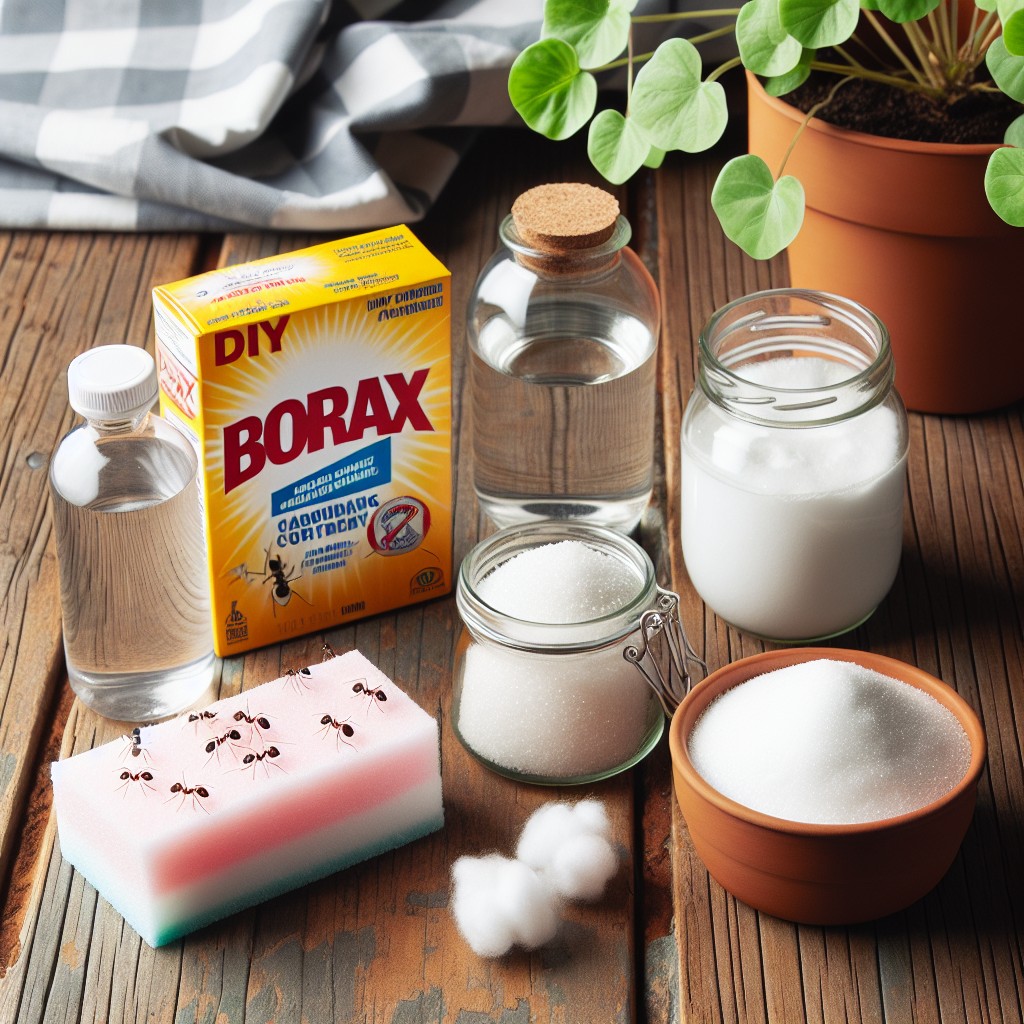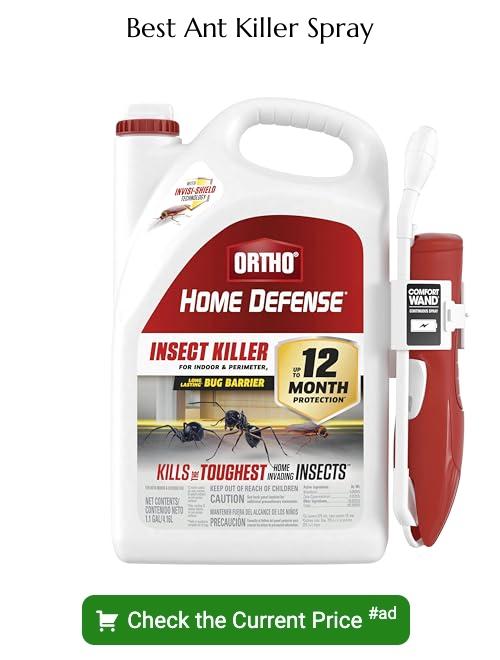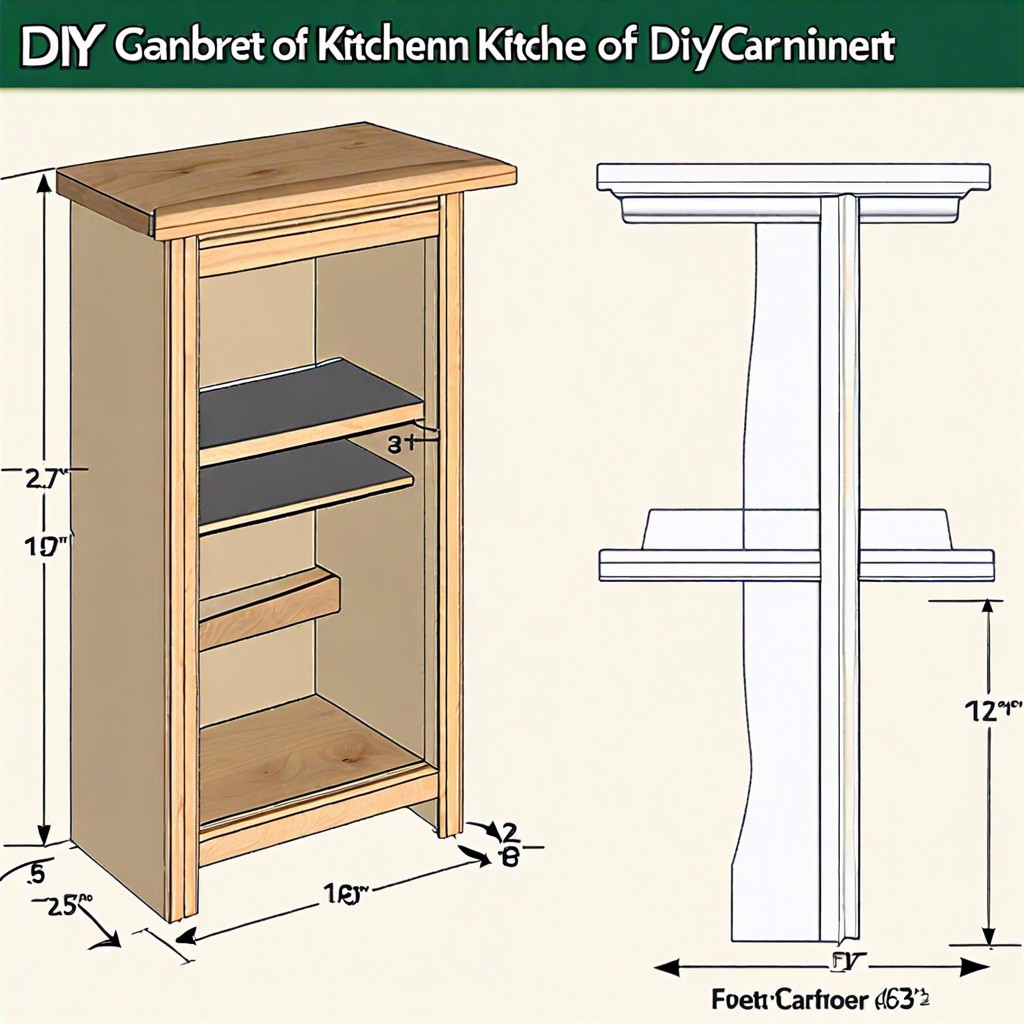Last updated on
Discover effective steps to make your own homemade ant killer using general household items, ensuring a safer environment for your family and pets.
Key takeaways:
- 1. Use a 1:3 ratio of borax to powdered sugar for effective ant bait.
- 2. Vinegar and water solution is a contact killer for ants.
- 3. Homemade ant killer ingredients: borax, vinegar, baking soda, diatomaceous earth, essential oils.
- 4. Place ant traps along their trails and near entry points.
- 5. Prevent future ant infestations by keeping a clean environment and sealing entry points.
What's Inside
Homemade Ant Killer: Key Ingredients and Application

Ready to tackle that pesky ant problem with items you likely have in your pantry? The secret to successful home concoctions lies in understanding how they work. Most DIY ant killers use a combination of sugar and borax. Sugar entices ants with its sweetness, while borax, a natural mineral, acts as the lethal component.
Mixing proper ratios is crucial. Too much borax and the ants will avoid it; too little and it won’t be effective. A tried-and-true mix is 1 part borax to 3 parts powdered sugar. Combine these, add a little water to get a paste-like consistency, and you’ve got a potent ant killer.
Application involves placing this mixture near ant trails, not directly in their path. Use disposable surfaces like cardboard or lids to prevent stains on household surfaces. Ants will find the bait, transport portions back to their colonies, and share the fatal treat, ensuring a collective demise. Remember, patience is key; it can take a few days to see results. Keep the mixture out of reach of pets and children, as borax is harmful if ingested.
Best DIY Homemade Ant Killer Recipe
Crafting your own bait to combat ants is simple and efficient. Start with a 1:1 ratio of sugar and borax. The sugar acts as the bait, attracting ants with its sweetness, while the borax is the silent heavy hitter, serving as a toxin to the ants. Combine these ingredients with warm water to help dissolve the mixture and create a syrupy consistency.
For those who prefer a paste, substitute sugar with powdered sugar and reduce the amount of water. The powder sticks to the ants’ bodies, ensuring they carry the poison back to the colony. Applying this paste near ant trails and entry points maximizes effectiveness.
Alternatively, use a mixture of vinegar and water as a contact killer. Vinegar’s acidity is fatal to ants on contact, but it evaporates quickly, making it safe for household surfaces. Be sure to target common ant pathways and the perimeter of the home with this solution.
Remember, patience is key. After setting up the bait, it may take up to 48 hours to notice a reduction in ant activity. The goal is to allow the ants to carry the poison back to the colony, spreading it to others, including the queen, ensuring a comprehensive solution to the ant problem.
Ingredients for the Best Homemade Natural Ant Killer
Harnessing the potency of common household substances can yield highly effective ant-killing mixtures. Key ingredients often include:
- 1. Borax: A natural mineral, borax disrupts an ant’s digestive system when ingested. Blending with a lure, like sugar, invites ants to this fatal feast.
- 2. Vinegar: Its strong scent obliterates ant pheromone trails and its acidity exterminates on contact. A 50/50 solution of vinegar and water works wonders.
- 3. Baking soda: When mixed with powdered sugar, it attracts ants with sweetness, while the baking soda reacts fatally with their acidic biology.
- 4. Diatomaceous earth: A pinch sprinkled in problem areas works mechanically, with microscopic edges that puncture ant exoskeletons, causing dehydration.
- 5. Essential oils: Peppermint or lemon oil repels with their strong scent, disrupting trails and deterring newcomers. Dilute a few drops in water for a repellent spray.
These ingredients are generally safe for use around pets and children, but it’s crucial to apply with care and ensure proper labeling and storage.
Placement Is Key for Ant Traps
Maximizing the effectiveness of your homemade ant traps hinges on strategic placement. Ants typically trail along edges and corners, avoiding open spaces. Therefore, identifying their common routes is paramount.
Check along baseboards, countertops, and near any ant sightings for a trail. Once you’ve pinpointed their path, place your ant killer directly on their route for maximum exposure.
Additionally, consider locating traps close to entry points—where ants invade from outside. Look for cracks in the walls, gaps under doors, or windows that might be welcoming these unwanted guests. Ensuring ant traps are near these areas cuts them off right at the source.
It’s also essential to place traps away from areas accessible to children and pets to avoid accidental ingestion or disturbance. If you’re using liquid bait, small shallow container lids work great as they are accessible to ants and easy to position in the right spots.
Remember, patience is crucial; it may take a few hours or even days for ants to discover the bait and signal others. Replacing the traps regularly ensures they remain fresh and appealing, enticing ants effectively and continuously engaging the enemy in your silent war against the invasion.
Preventing Future Infestations
Keeping ants at bay involves a combination of cleanliness, vigilance, and barrier maintenance. Start by ensuring that no food crumbs or spills are left unattended, as these are open invitations for an ant party. Regularly vacuum and clean floors and countertops to remove any traces of sweets or grease.
Moisture is another ant attractant. Address leaks promptly and keep areas around sinks and tubs dry. In the bathroom, consider using a squeegee on tiles after showering to discourage moisture-loving pests.
Seal entry points. Periodically inspect the exterior of your home for cracks and crevices. Use caulk or other suitable materials to seal potential entryways. This serves as a physical barrier, discouraging ants from sneaking in.
Lastly, natural deterrents can be strategic allies. Planting mint or using essential oils like peppermint or lemon can disrupt ant trails and communication. These aren’t foolproof methods but can be complementary to your overall defense strategy.





